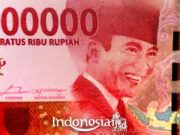Seudati dance is one of the traditional dances originating from the Aceh region. This dance is usually danced by a group of male dancers with their distinctive and energetic movements accompanied by the chanting of poetry and the sound of pounding the dancers. Seudati dance is one of the traditional dances that is quite famous in the Aceh area, and is often displayed at various events, both traditional events, performance events, and cultural events.
History of Seudati Dance
Historically, this dance originally grew and developed in Gigieh Village, Simpang Tiga District, Pidie Regency, Aceh, led by Syeh Tam. This dance then began to develop in other areas, one of which was in Didoh Village, Mutiara District, Pidie Regency, which was led by Syeh Ali Didoh. Over time, this dance then began to spread to other Aceh areas, until now the Seudati Dance has spread to all areas in Aceh.
Formerly this dance was also used by religious leaders as a means of preaching in spreading Islam. However, during the Dutch colonial period this dance was banned. Because the lyrics that are performed in the Seudati Dance are considered to be able to foster enthusiasm for Acehnese youth to rise up to cause rebellion against the Dutch. After Indonesian independence, this dance was again allowed, not only as a medium of preaching, but also often performed as a dance performance until now.
Function and Meaning of Seudati Dance
As previously mentioned, Seudati Dance was often used as a medium of preaching. But now this dance also functions as a performance dance. The name Seudati Dance comes from the word “Syahadat”, which means “to testify”. Or in Islam, it means recognition of God and the Prophet. It is also related to the lyrics that are sung in accompanying this dance. These verses usually contain religious life and teachings. Besides that, every movement in Seudati Dance certainly has special values and meanings in it.
Seudati Dance Performance
Seudati dance is usually played by male dancers. The dancers usually consist of 8 main dancers consisting of one sheeh, one sheikh maid, two apeet wie, one bak apeet and three regular helpers. In addition, in this dance, there are also two other people who serve as poets called aneuk syahi.
The movements in this Seudati Dance are very distinctive, energetic, and straightforward. Movement in this dance is dominated by hand and leg movements and is supported by varying floor patterns. The most prominent movements are usually chest clapping, finger blinking, hand jerking and foot stomping which are performed agile, fast and harmoniously. So that not infrequently the audience is amazed to see this Seudati Dance performance.
Seudati dance companion
In this Seudati Dance performance, it is usually accompanied by no musical instrument, but only accompanied by a poet. The poetry that is sung usually takes the theme of daily life and religious teachings. Apart from the lyrics, this dance is also accompanied by the sound of clapping, stamping of the feet and finger picking of the dancers’ movements. This movement is of course adjusted to the rhythm and tempo of the song / lyrics that are sung to make it look harmonious.
Seudati Dance Costume
The costumes used by dancers in Seudati Dance usually use special costumes with traditional themes. The costume used usually consists of a long-sleeved tights and trousers. These clothes and pants are usually white. Meanwhile, accessories usually consist of a songket cloth worn around the waist to the thigh, rencong inserted around the waist and a red tangkulok (headband).
Development of Seudati Dance
In its development, Seudati Dance is still being preserved and developed until now. Various creations and variations in the movements are also often displayed in each show to make it look attractive but not to lose its authenticity and distinctive features. This sister dance is often displayed at various events, both traditional events, celebration events and other regional events. In addition, this dance is also often performed at various cultural events such as art performances, cultural festivals, and tourism promotion.
Besides being shown as a performance dance, this dance is also often contested between teams. This is what makes people even more enthusiastic about participating in this Seudati Dance. Apart from being a competition, this is of course done to preserve and introduce to the young generation and the wider community about this Seudati Dance.
That was the introduction to “Seudati Dance, Traditional Dances from Aceh”. Hopefully this is useful and increases your knowledge about traditional arts in Indonesia. Do you want to learn Indonesian culture? Come on, keep looking for information from Indonesiar.































